
The average price for a chemical peel treatment is $500, but can range from $200 up to $6,000 and depends on a variety of factors. Learn about the different types of peels, how much they cost and which may be best for you.
Written by Kate Bayless
Posted February 24, 2024

Tired of those fine lines and wrinkles? Ready to do something about those acne scars and skin discoloration? Consider a chemical peel, which can be an easy, non-surgical, minimally-invasive way to look younger and improve many common skin issues such as fine lines, acne scars, hyperpigmentation and sun damage. It's no surprise that according to the most recent Plastic Surgery Statistics Report, chemical peels rank fourth on the list of the most common minimally-invasive cosmetic procedures. 1
If you're considering a chemical peel to improve your skin, this guide can provide useful information to help you better plan and budget for expenses related to the procedure.
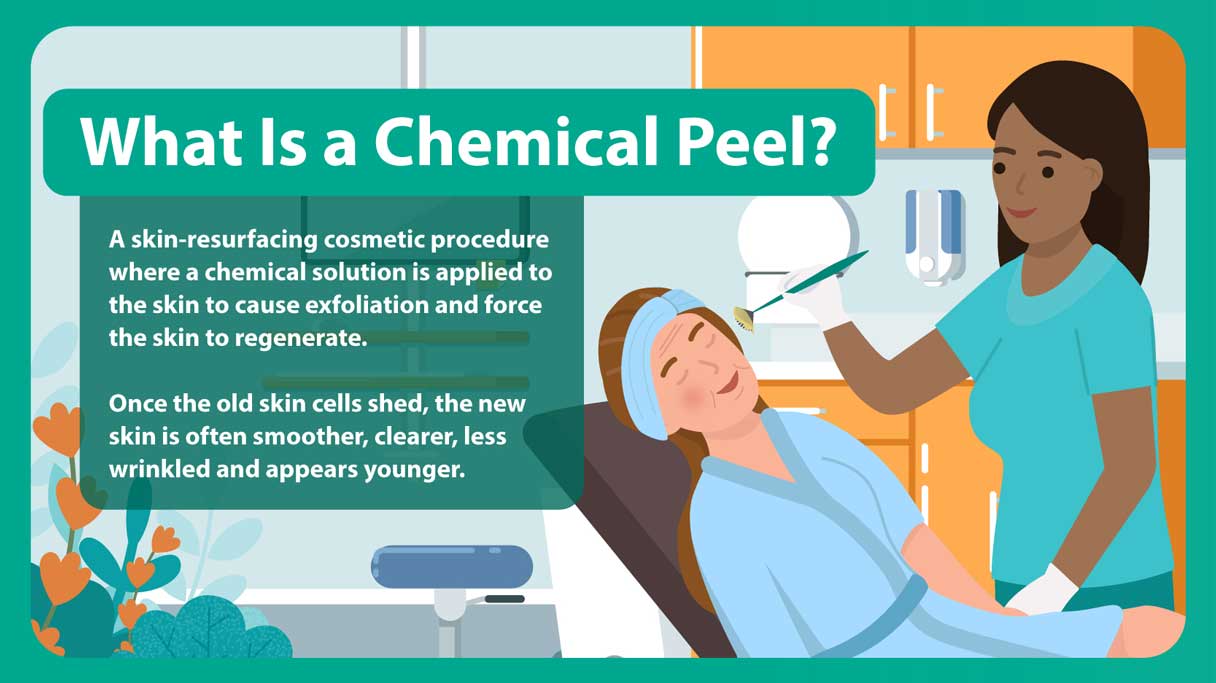

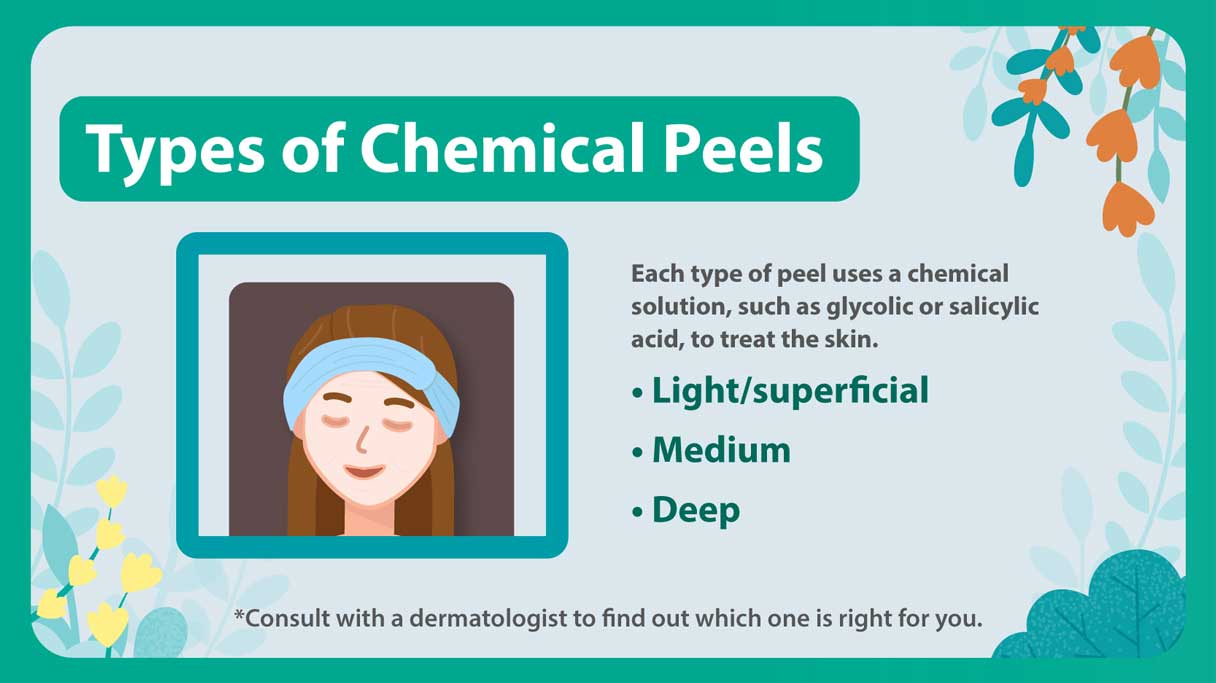
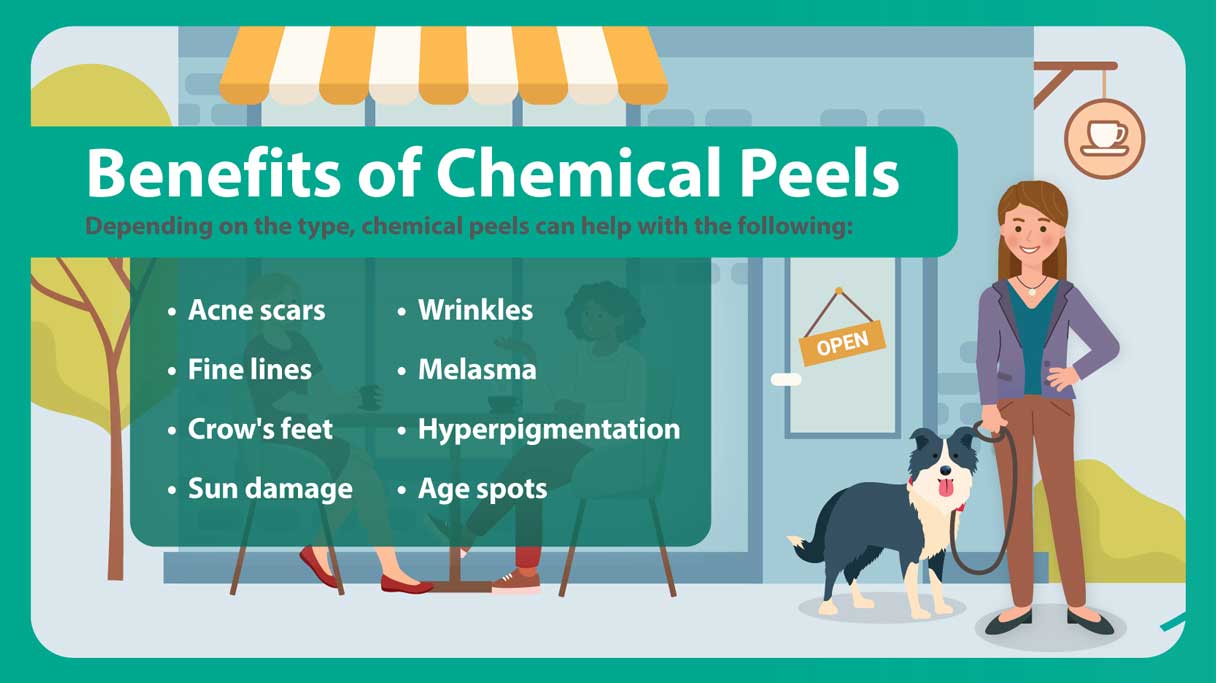
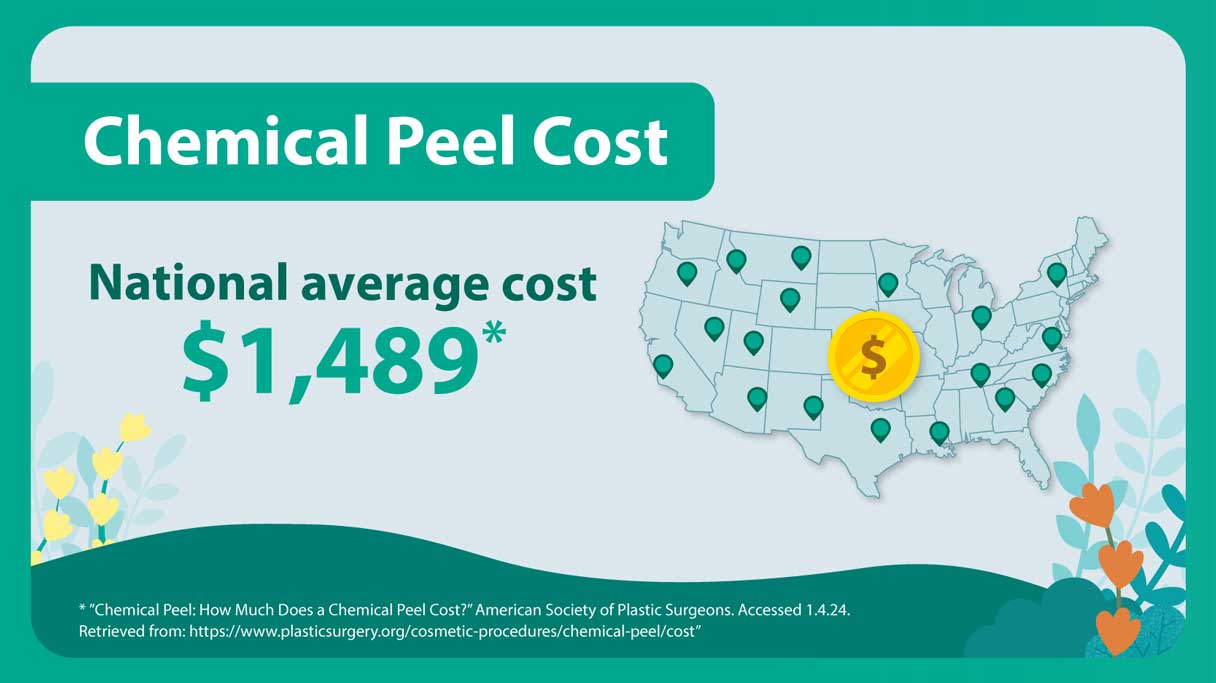
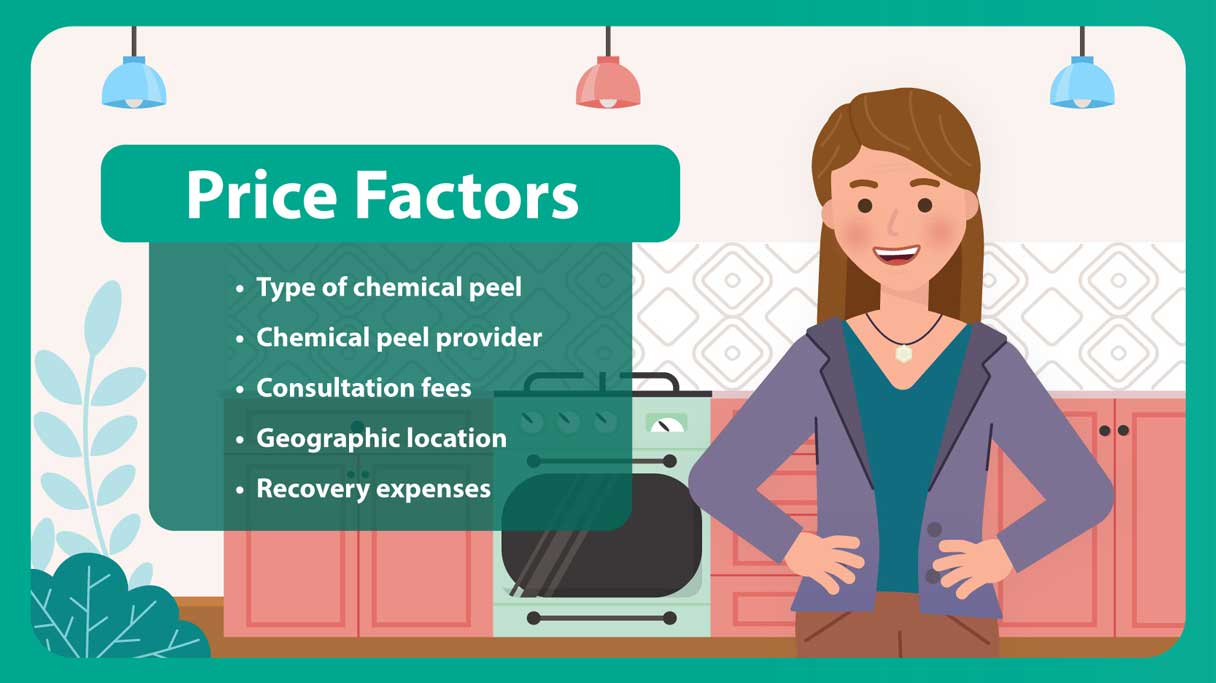

A chemical peel is a skin-resurfacing cosmetic procedure where a chemical solution is applied to the skin in order to cause exfoliation and force the skin to regenerate. Once the old skin cells slough off, the new skin is often smoother, clearer, less wrinkled and appears younger. 2
There are three types of chemical peels that correspond with the depth of treatment, recovery time, potential results and cost of the chemical peels. Each type of chemical peel uses a chemical solution, such as glycolic or salicylic acid, to treat the skin. The different types of peels may also induce varying levels of discomfort, recovery time, skin peeling and post-peel results. 2
The three main types of chemical peels are:
A light or superficial chemical peel is designed to remove the epidermis, or the outer layer of skin. A superficial peel can be used to brighten and even out the skin tone by gently treating skin concerns such as acne, wrinkles or blotchiness. 3
A light chemical peel often relies on a low-dose application of glycolic acid, lactic acid, salicylic acid and/or maleic acid. While you may experience some stinging, redness and light flaking, the side effects are usually minimal. 4
Recovery is usually minimal, too, giving light chemical peels their nickname of “lunchtime peels." 2
A medium chemical peel goes deeper than a superficial peel, removing skin cells from both the epidermis as well as portions of the dermis, the middle layer of the skin. Medium chemical peels can be used to lighten age spots, improve acne scars, decrease fine lines and wrinkles, smooth rough skin and improve moderate discoloration. 2
Acids such as glycolic acid or trichloroacetic acid may be used for medium chemical peels.
Recovery from a medium chemical peel can take seven to 14 days and include such symptoms as redness, swelling, blistering, scabbing and peeling. 2
A deep chemical peel is designed to penetrate deep into the middle layer of the skin, providing a more dramatic treatment of wrinkles, acne scarring and sun damage. 2
Deep chemical peels typically use trichloroacetic acid or phenol and often require sedation, follow-up appointments and two to three weeks of healing time. 2
The average cost of a chemical peel is around $500, but the price can range from $200 up to $6,000. This wide price range for chemical peel treatments can be attributed to a number of factors that can impact the price of treatment, including:
One of the biggest impacts on the cost of a chemical peel is what type of chemical peel you receive. Below is a breakdown of the average cost by type of chemical peel.
Health insurance plans may not cover the cost of chemical peels if the health insurer doesn't consider the treatments to be medically necessary. With insurance coverage, out-of-pocket costs for a chemical peel can include deductibles, coinsurance and co-pays. It's a good idea to contact your insurance company in advance for details about your specific plan and benefits.
Depending on the type of chemical peel that you get, chemical peels can help treat and improve the following skin conditions: 2
Despite all the skin conditions that chemical peels can help with, it is important to note what chemical peels cannot do.
Chemical peels are not designed to treat deep scars or wrinkles or tighten loose or sagging skin. For these types of skin concerns, you may want to talk with your provider about a facelift. 7
Depending on the type of chemical peel you receive, they can cause redness, swelling and scabbing. Some deeper chemical peels may cause scarring, hyper- or hypopigmentation or infection. Deep chemical peels that use carbolic acid can also carry a risk of damaging the heart, kidneys or liver. 3
Talk with your doctor and dermatologist to determine if a chemical peel is right for you.
When getting chemical peels or another cosmetic procedure, the CareCredit credit card can help you pay for costs not covered by insurance.* Use our Acceptance Locator to find a doctor or cosmetic specialist near you that accepts CareCredit. Continue your wellness journey by downloading the CareCredit Mobile App to manage your CareCredit account, find a provider on the go and easily access the Well U blog for more great articles, podcasts and videos.
In addition to cosmetic procedures, you can also use your CareCredit credit card for dentistry, pet care, vision, hearing, health systems, dermatology, pharmacy purchases, spa treatments and so much more within the CareCredit network. How will you invest in your health and wellness next?
Kate Bayless is an experienced health and wellness freelance writer with 15 years of experience. Her work has appeared in Parents, Women's Health, Beachbody, and OpenFit.



![]()
ARTICLE
Posted August 30, 2024
When teeth go missing, it’s a real smile-spoiler. But fear not because dental implants can come to the rescue, boosting your dental health and giving you a reason to flash those pearly whites. Check out these nine options.

![]()
ARTICLE
Posted August 26, 2024
The cost of liposuction varies based on the type of procedure, but ranges from $3,000-$8,000 on average. Learn more about how the procedure works and what you can expect to pay.

![]()
ARTICLE
Posted August 23, 2024
Various disorders can cause vertigo, but this uncomfortable spinning sensation is treatable. Learn more about the different causes, symptoms and treatment options for vertigo, including associated costs.
* Subject to credit approval.
The information, opinions and recommendations expressed in the article are for informational purposes only. Information has been obtained from sources generally believed to be reliable. However, because of the possibility of human or mechanical error by our sources, or any other, Synchrony and any of its affiliates, including CareCredit, (collectively, “Synchrony”) does not provide any warranty as to the accuracy, adequacy, or completeness of any information for its intended purpose or any results obtained from the use of such information. The data presented in the article was current as of the time of writing. Please consult with your individual advisors with respect to any information presented.